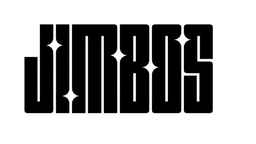Compound vs Polish: What’s the Real Difference (and Do You Need Both?)
If you’ve ever wondered whether you need a compound, a polish, or both to correct paint—you're not alone. Here’s a simple breakdown of what each product does, when you need them, and how to get pro results without all the confusion.
What’s a Compound?
A compound is an abrasive product used to remove heavier defects like:
- Oxidation
- Deep swirl marks
- Water spot etching
- Heavy clear coat scratches
Compounds cut quickly, but often leave behind haze or micro-marring that needs to be refined afterward.
What’s a Polish?
A polish is a lighter abrasive (or no abrasive at all) designed to improve gloss and clarity. It removes light hazing and refines the surface after compounding—or enhances shine on already-clean paint.
So, Do You Always Need Both?
Not anymore.
With the right pad and polish combo, you can correct and finish in one step. That’s where a pad-dependent product like Picture Perfect Polish comes in.
The Smarter Way: One Polish, Two Pads
Picture Perfect Polish adapts based on pad choice and pressure. Use it with:
- Cut & Finish Pad for defect removal and leveling
- Black Finishing Pad for gloss refinement or soft paint
When You Might Still Need a Dedicated Compound
- You’re correcting heavy defects on rock-hard clear coat
- You’re doing multi-step show car correction
- You want maximum correction in minimum passes and don’t mind cleaning up afterward
But for most daily drivers and pro work? A high-quality one-step polish like this is faster, cleaner, and more efficient.
Table: Compound vs Polish vs Picture Perfect Polish
| Product Type | Cut Level | Gloss Finish | Ease of Use |
|---|---|---|---|
| Traditional Compound | High | Low (needs refining) | Messy |
| Traditional Polish | Low | High | Easy |
| Picture Perfect Polish | Pad-Dependent | High | ✅ Clean, low-dust, no haze |
Related Posts
Recommended Correction System
Frequently Asked Questions
Can I skip compounding if I use the right pad?
Yes. The Cut & Finish Pad with Picture Perfect Polish handles most common defects without a dedicated compound.
What if I still have haze after compounding?
Switch to the Black Finishing Pad and refine the surface with the same polish. That’s usually all you need.
Will a one-step polish work on all paints?
Yes—just adjust your pad and pressure based on the hardness and condition of the clear coat.
Is compound more dangerous for beginners?
It can be. Many compounds dust, sling, and cut fast. That’s why a pad-controlled polish is safer and more forgiving.



